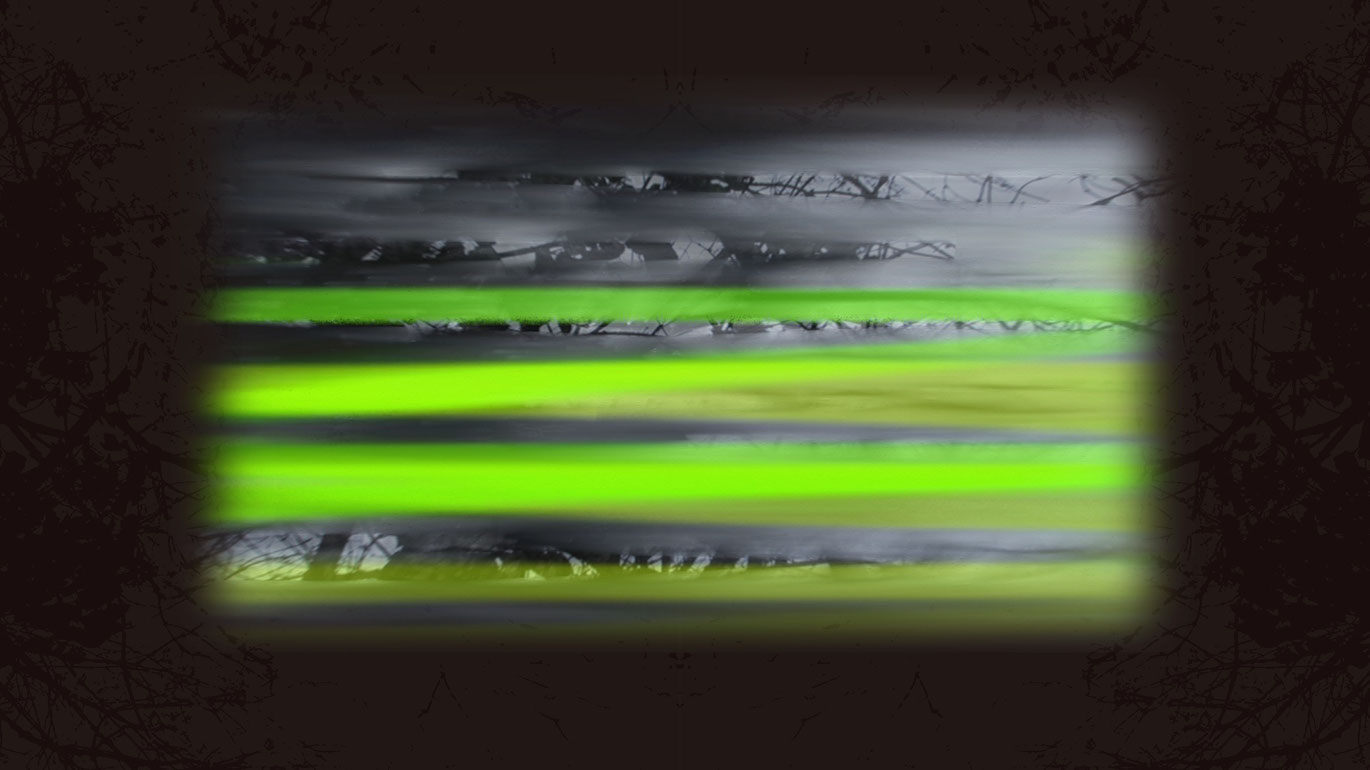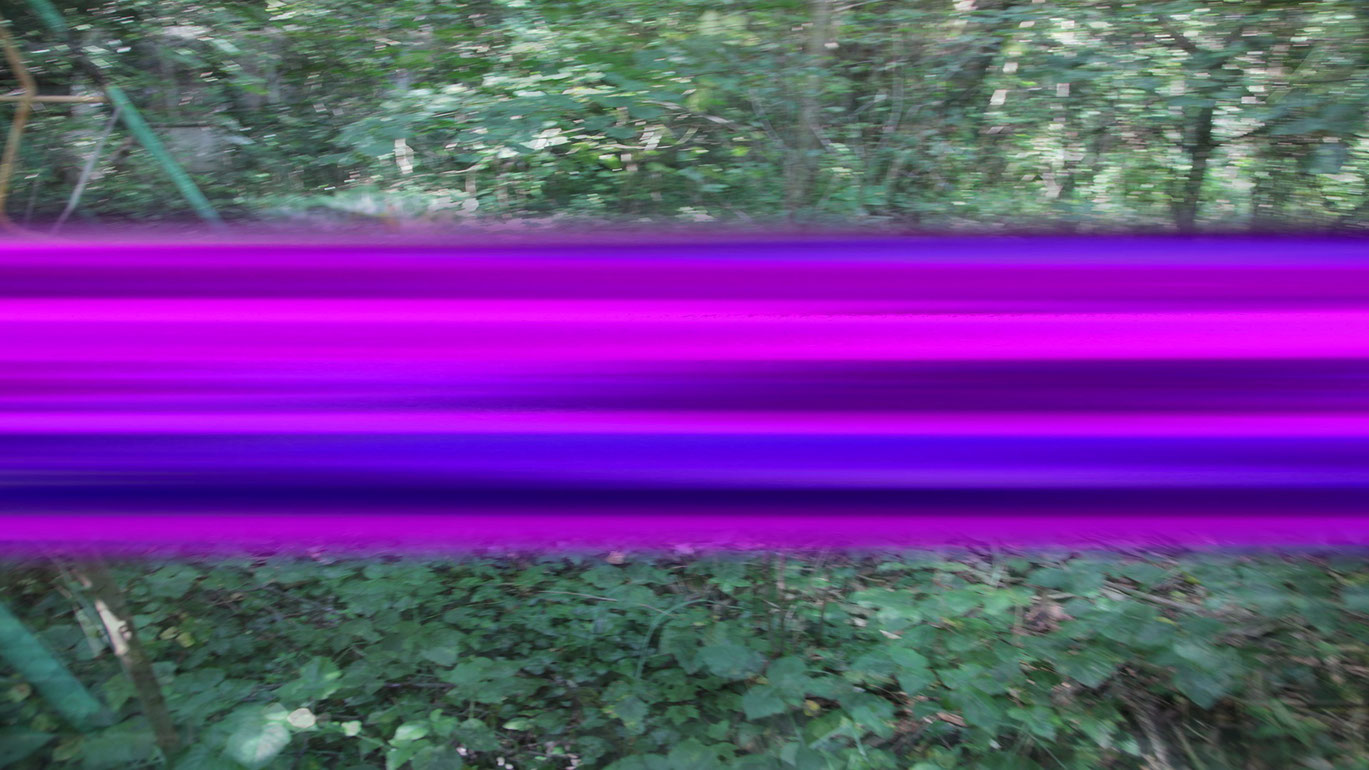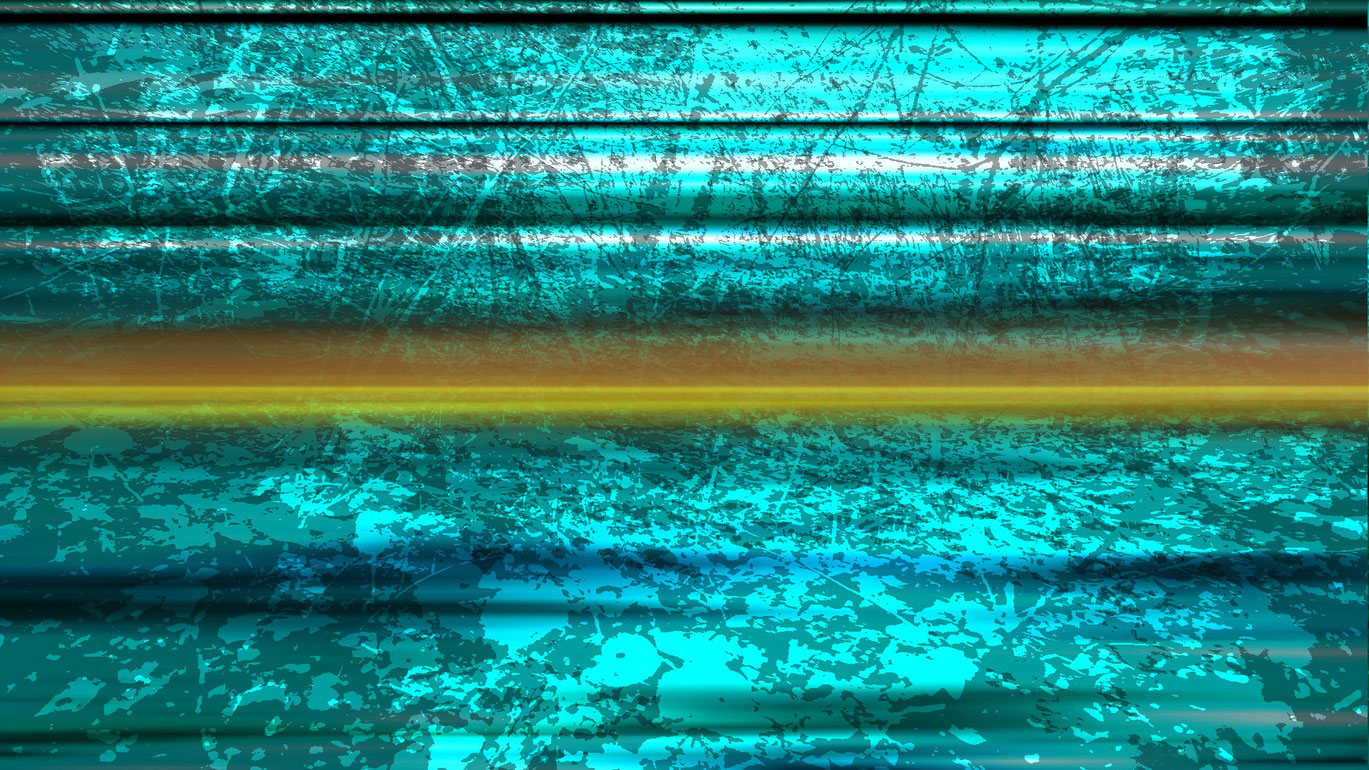Arrow
Exterior. Night. Long shot. A building crane towers over gloomy urban scenery. Random buildings claustrophobically bear down on an overgrown park. The next shot transports the audience into the middle of the hidden garden. The small urban woodland is explored from within, captured by a sequence of shaky handheld camera takes. The subjective camera leads us through a thick forest of ivy-covered trees; a dilapidated swing set overgrown with weeds is the only sign people were ever here. These images are accompanied by a deep, eerie drone, which is overlaid with a polyphonic swarm of twittering birds.
Thomas Steiner brings an additional visual level into play by superimposing photorealistic shots with digitally estranged, flowing shapes. These nebulous forms expand horizontally, their glaring and extremely artificial colors contrasting the naturalistic impression of the filmed images. This visual estrangement heightens incrementally, a sequence involving an image within the image occurs, followed by inverted, tinted shots of the forest. The camera continually presses forward, ever deeper into the impenetrable park. Vertical and poisonous veils of mist relentlessly obscure the view – sometimes partially, sometimes entirely. The final sequence brings us back full circle, to a static view of the cityscape dominated by the crane. Night has turned to day and the sun-struck scenery is no longer eerie.
Thomas Steiner brings a number of dichotomies into direct collision: nature vs. civilization, representation vs. abstraction, analog vs. digital, natural vs. artificial forms and colors, gloomy droning vs. happy bird chatter. Arrow carries its audience off into an “enchanted garden”, long ago taken over by nature´s wild overgrowth. It transmits the uncomfortable sense of being an unwelcome intruder in this forgotten piece of land. The soundtrack additionally stresses a feeling of loneliness and being lost. Arrow is a multi-faceted poem of images – it is as beautiful as it is sad.
Arrow
2015
Austria
7 min



